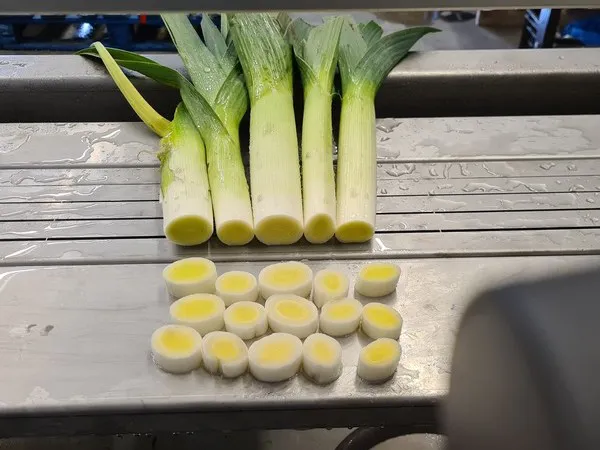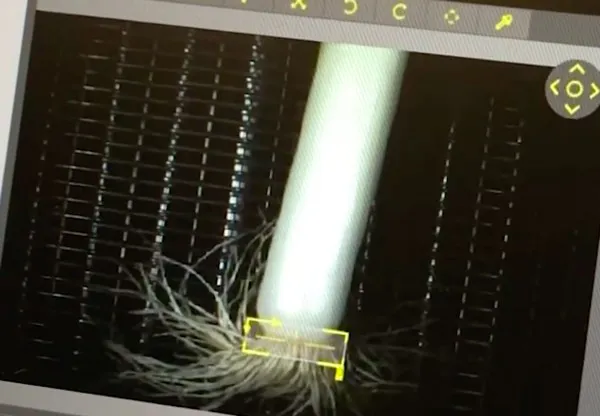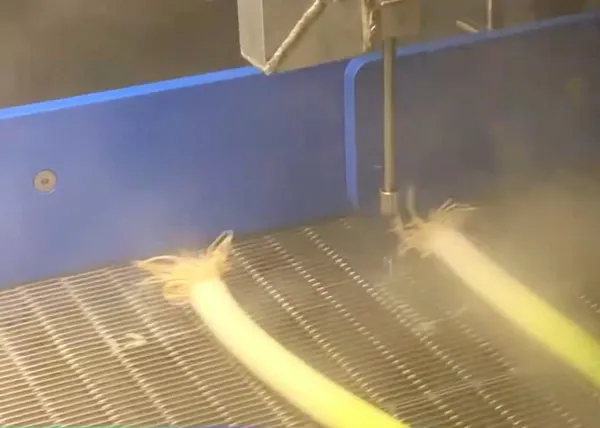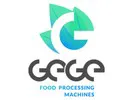GEGE Machinebouw introduced waterjet cutting lines for products, including leeks, about a decade ago. This innovation means using a moving waterjet blade to process leeks has become a common practice among leek growers. Still, there was always a bottleneck when positioning the leeks because they had to be placed at a fixed distance.
"It's like trimming your nails. Cut too close, and you get a piece of root too, but start cutting into the flesh, and you lose volume and limit shelf life," begins this Dutch engineering company's director, Bart van Schaijk. His company has now solved this issue thanks to an Artificial intelligence (AI)-based camera system.

"Positioning the leeks is the key. These vegetables come in all lengths and thicknesses. With traditional water cutting, they're often cut too short or too long. Using the old method, as much as 70% of the leeks had to be handled by people afterward. Linking this camera system means the machine now recognizes where the root begins so we can direct the waterjet blade to the exact right position. With cleaned leeks, up to 95% precision slicing is sometimes possible. With uncleaned ones, that's still 90%. Those parts of the leeks the cameras can't see are still cut, as usual, in a fixed position. That saves plenty of labor, but above all, the end products have a better quality because cutting the root base in the correct place ensures maximum shelf life and minimum product loss."

According to Bart, waterjet cutting has many benefits. “The moving waterjet blade slices the vegetables efficiently, hygienically, and accurately. A high-speed, pressurized jet of water cuts the product perfectly in the exact right place. Traditional cutting systems blunt the blades quickly, which negatively affects the cut. The advantage of water cutting is that the blade doesn't become blunt, either. Every ten millimeters, the leek is cut with a new, fresh blade,” he says.
“That results in a very sharp cutting edge, which improves the product's shelf life. Water shoots out of the nozzle at 600 meters per second. That's especially hygienic, as it prevents fungi and germs from being carried away from the blade, and neither does the machine damage the products. Capacity remains the same: 160 leeks per minute. Research shows that this technique improves leeks shelf life by quite a few days."
Demo model
This new camera system was developed last year, and GEGE expects to deliver the first machines this year. "We have a global market, making half our revenue in the Netherlands and the rest overseas. We've also sold waterjet cutters in places like Canada, the United Kingdom, Scotland, Germany, and Belgium," Bart explains.
"You cannot use waterjet cutting for all products. Tests on, for instance, certain types of hard cheese and boiled eggs did not yield the desired results. It proved suitable for fruits and vegetables such as leeks, lettuce, and fruit. "You can discuss this technique's usefulness to no end, but the best way is to test it in practice. That's why we have a demo model so companies can test this method on their products."

"The integrated camera system completes the circle. After all, you can have a fantastic automated machine, but if things go wrong during positioning, you still won't achieve the desired result. We see that with, for instance, bell peppers. It's not too hard to cut correctly; the issue is positioning them correctly. We manage to do that by integrating vibrators, belts, and robots. Also, our cameras don't have a standard Vision system; they use AI. That promises something for the future since the system only gets smarter. The more machines we sell, the more accurate the system becomes," Bart concludes.
For more information: 
Bart van Schaijk
GEGE Machinebouw B.V.
Koperslagerstraat 6, 5405 BS Uden
Postbus 291, 5400 AG Uden
T +31 (0) 413 – 36 52 19
bartvanschaijk@gegebv.nl
info@gegebv.nl
gegebv.nl
